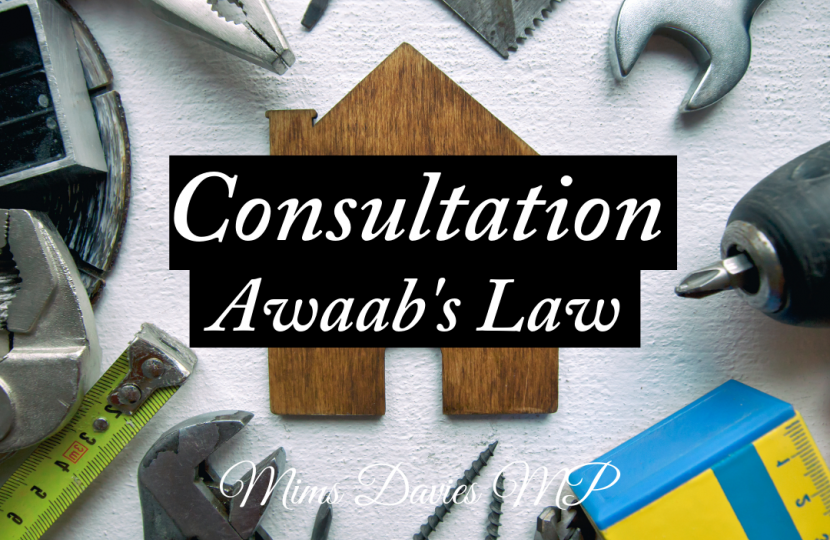
Mims Davies MP fully backs this consultation regarding Awaab's Law and encourages all residents to take part.
Awaab's law proposes new legal requirements for social landlords to investigate hazards within 14 days, start fixing with a further 7 days, and make emergency repairs within 24 hours. Landlords who fail can be taken to court where they may be ordered to pay compensation.
On 21st December 2020, Awaab Ishak died as a result of a severe respiratory condition due to prolonged exposure to mould in his home. His parents had complained to their landlord, who not only failed to take action to address the hazards in the Ishak family’s home, but in fact blamed the family for the extensive mould in the property.
The tragic death of Awaab brought to light the urgent need to eradicate these hazards from social homes and improve standards across the sector. The goal must be to ensure that this tragedy never occurs again, and that all social renters have access to the safe and decent social homes they deserve.
On 20th July 2023, Awaab’s Law entered the statute book through Clause 42 of the Social Housing (Regulation) Act. Awaab’s Law effectively inserts into social housing tenancy agreements a term (called an implied term) that will require landlords to comply with new requirements, to be set in detail through secondary legislation.
This means all registered providers of social housing (also referred to as ‘social landlords’) will have to meet these requirements and, if they fail to do so, tenants will be able to hold their landlords to account by taking legal action through the courts for a breach of contract.
Awaab’s Law is part of the biggest government reforms affecting social housing in a decade. Since 2010, there has been a steady improvement in the quality of social housing with a reduction in the proportion of non-decent social rented homes from 20% in 2010 to 10% in 2021. The latest English Housing Survey data, published in July 2023, found that damp and mould affect 177,000 social homes – but residents face other severe problems. BRE, the built environment research body, estimates that around 217,000 social rented homes are blighted by a range of dangerous health and safety hazards. The people who live in them, and suffer the consequences, require treatment by the NHS that costs around £65 million a year.
Our Levelling Up White Paper pledged to reduce non-decency in rented homes by 50% by 2030. Awaab’s Law will contribute to this mission by making sure that social housing landlords are taking swift action on the assessment and remedy of the most serious hazards.
Please complete the consultation here.
Mims Davies MP said:
"The tragic death of Awaab Ishak should never have happened and I am pleased the Government have announced tough new laws to force social landlords to fix their homes within strict new time limits.
Awaab’s Law will force social landlords to fix damp and mould within these strict time limits, in new amendment to the Social Housing Regulation Bill and will ensure that homes across the country are safe, decent and warm to live in.
Other amendments tabled this week will continue to strengthen the Bill, including improvements to insolvency arrangements, data protection and the requirement for written reports after inspections."
This consultation looks at proposals for the implementation of Awaab’s Law, as introduced by the Social Housing (Regulation) Act 2023 (Clause 42 ‘Social housing leases: remedying hazards’). This consultation is also part of an interrelated package of publications relating to social housing quality.
Section 1 provides background information covering:
- the context and background to Awaab’s Law
- hazards and repairs in social housing
- new policy and upcoming changes
Section 2 explains:
- how Awaab’s Law will be enforced and how the legal route to redress will operate in practice
- the role of other bodies (the Housing Ombudsman and the Regulator of Social Housing) in holding landlords to account for timely repairs
Section 3 explains:
- which hazards will be included within the scope of Awaab’s Law
- each policy proposal in turn
Section 4 explains:
- the estimated costs and benefits of Awaab’s Law




